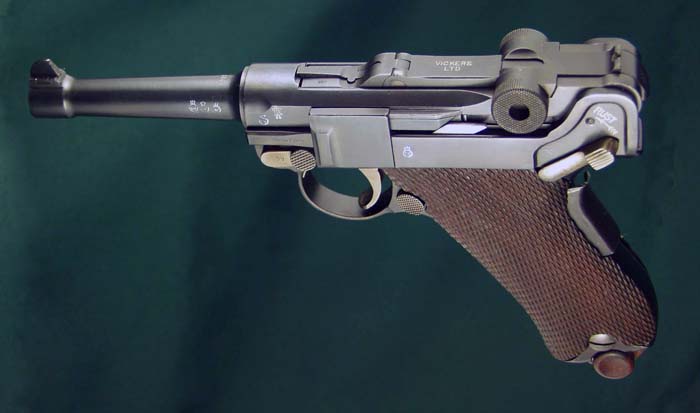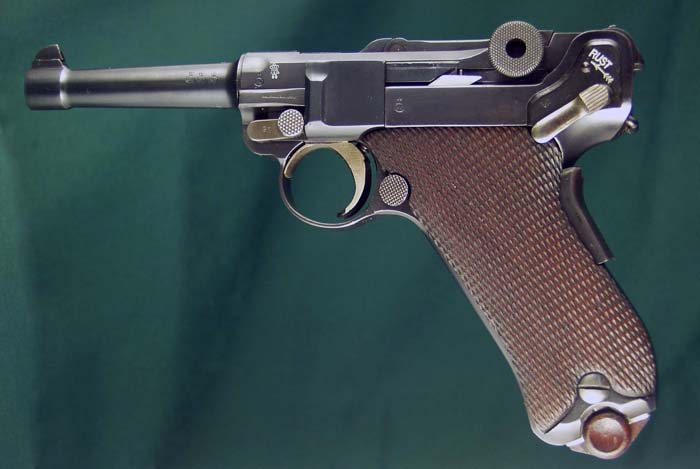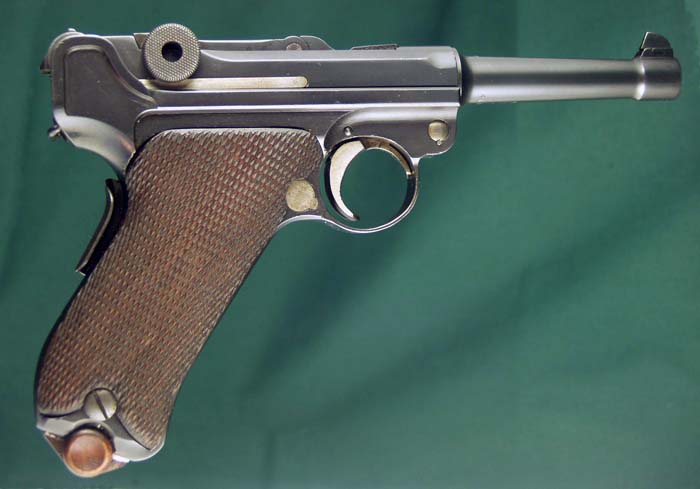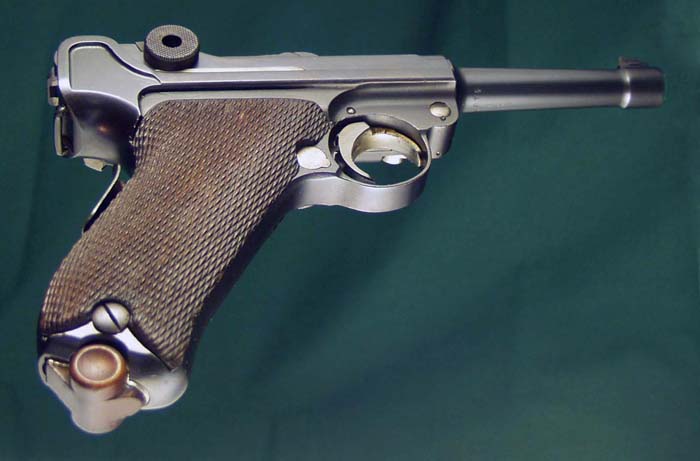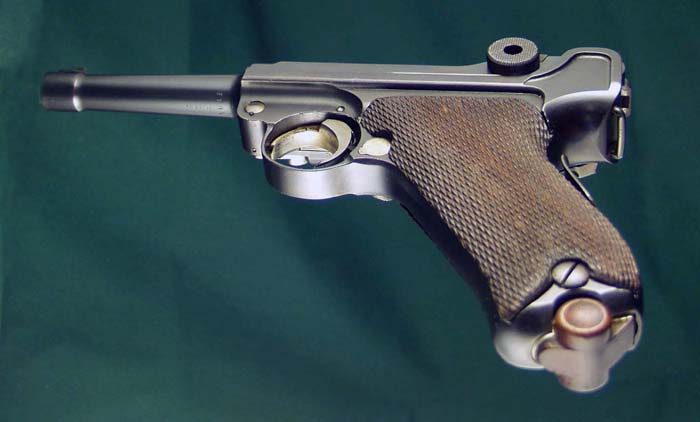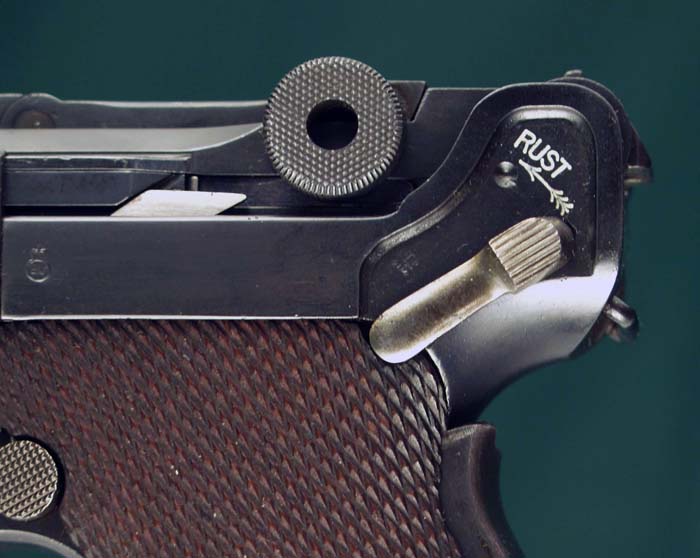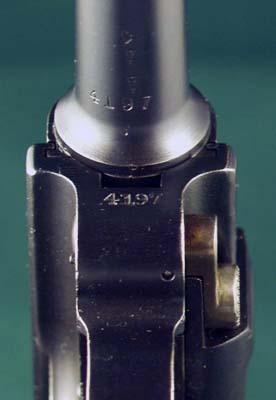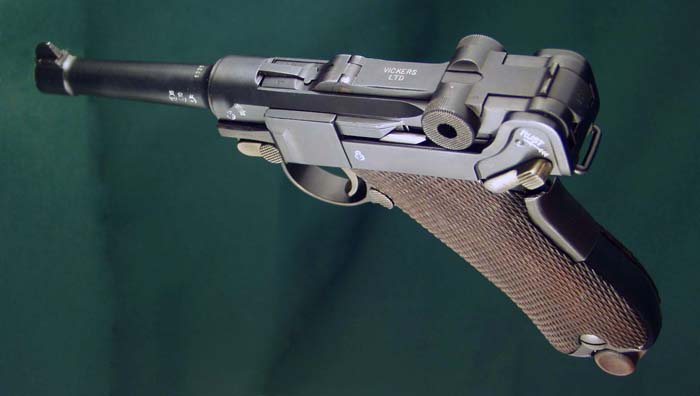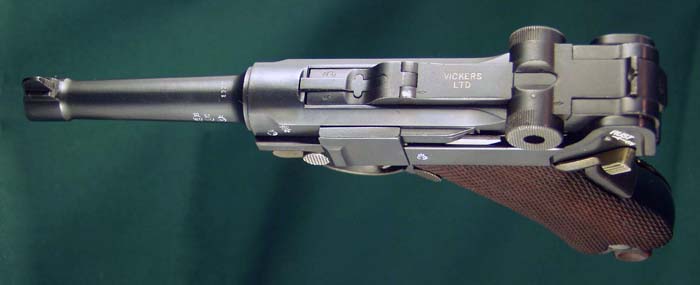|
|
| This is a 9mm on a new 1906 Model frame, 100mm barrel with a grip safety and no stock lug. Vickers Lugers bear the marking "Vickers, Ltd." on the forward toggle link, "RUST" with an arrow curving upwards above the thumb safety lever and "GELADEN" on both sides of the extractor. (7173) |
|
In the beginning, the Netherlands was one of the first countries to adopt the Luger officially, their initial order having been placed before 1908. They reordered at least once before the outbreak of the First World War and possibly twice. Despite the fact that they are one of the world's smallest nations, the Netherlands were good customers of DWM. Not only did the Army use the Luger but also the Royal Netherlands Navy and the Royal Netherlands Indies Army (K.N.I.L.). |
